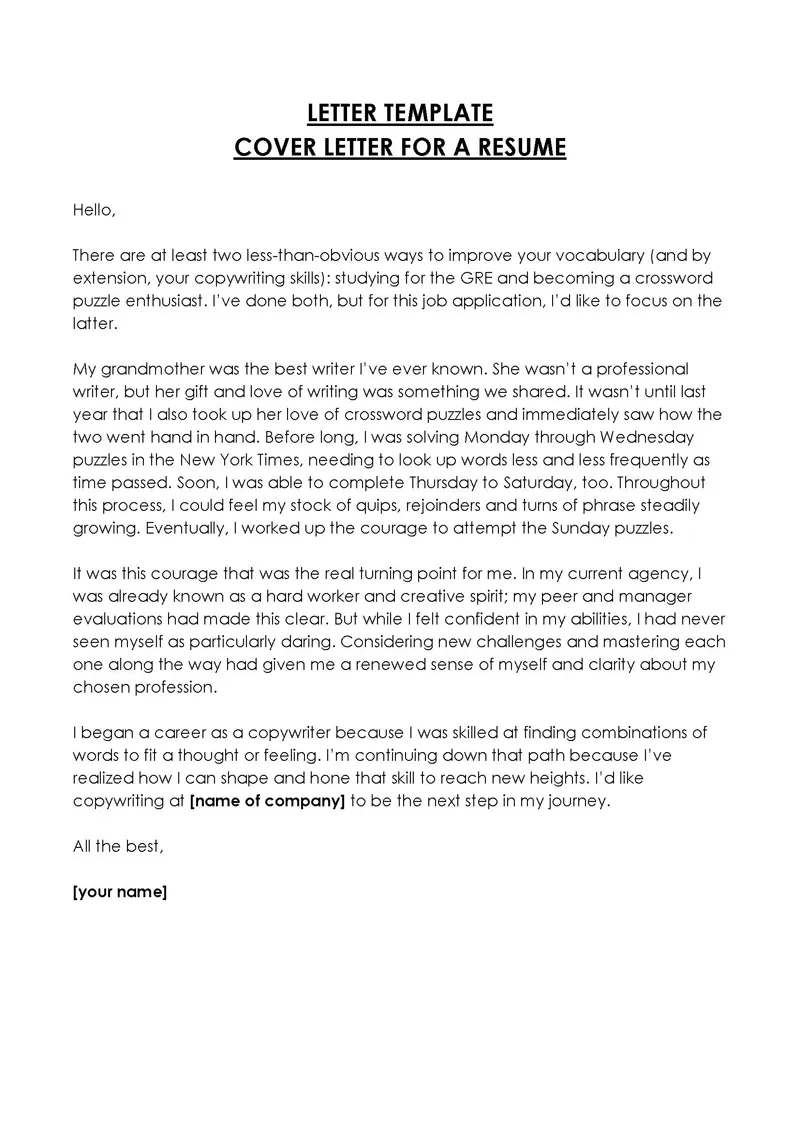Why a Cover Letter Matters
In the competitive world of job applications, a cover letter is your first opportunity to make a strong impression on a potential employer. It’s more than just a formality; it’s a crucial document that provides context to your resume and allows you to showcase your personality, skills, and enthusiasm for the specific role. A well-crafted cover letter can be the deciding factor in whether you get an interview, as it demonstrates your communication skills and your genuine interest in the position and the company. It offers you the chance to tell your story and connect with the hiring manager on a personal level, setting you apart from other candidates who may only submit a resume. A great cover letter can highlight your achievements and align your qualifications with the job requirements, making you a more compelling candidate.
Cover Letter Structure
A well-structured cover letter is easy to read and conveys your message effectively. The structure should follow a logical flow, guiding the reader through your qualifications and expressing your interest in the job. Consistency in formatting throughout the document is important to maintain a professional look. Divide your cover letter into clear sections, including contact information, a personalized salutation, a compelling opening paragraph, body paragraphs that highlight relevant skills and experience, a strong closing paragraph with a call to action, a complimentary close, and your signature. Each part should be well-written and tailored to the specific job and company you’re applying for. This structure ensures that you present yourself in the best possible light and make it easy for the hiring manager to understand your value as a potential employee.
Contact Information
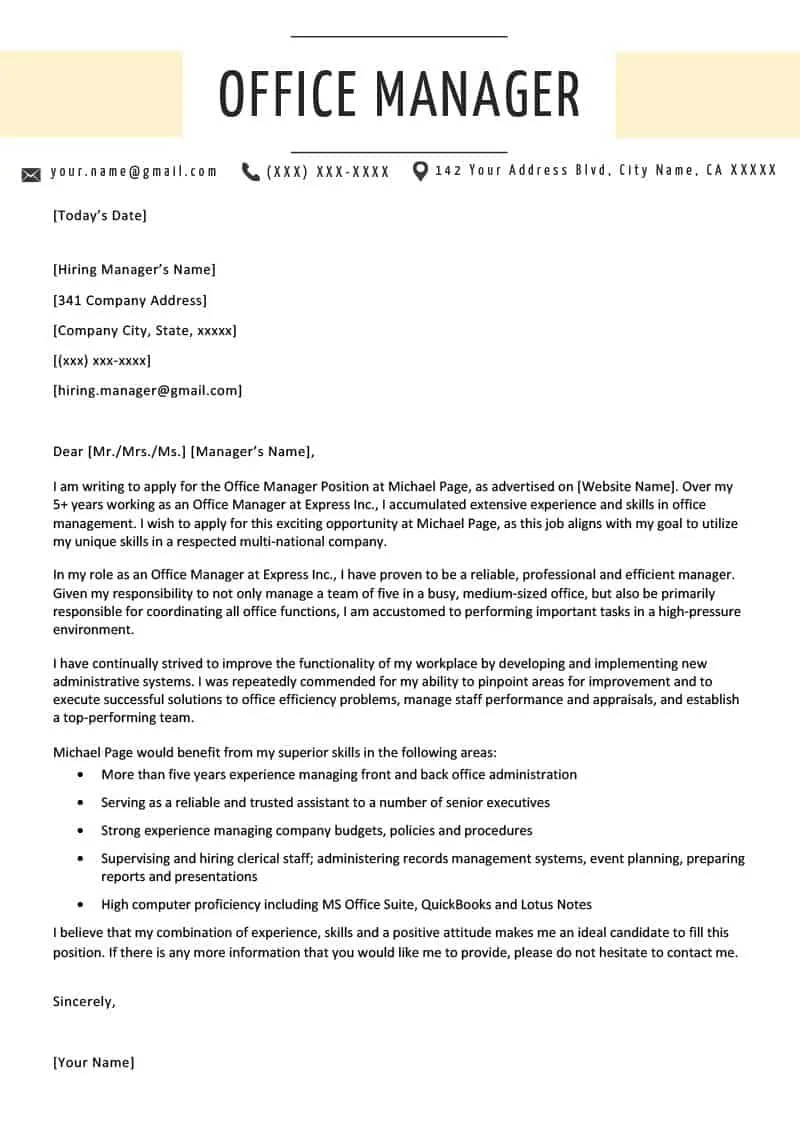
Begin your cover letter with your contact information. This should include your full name, address, phone number, and email address. Make sure your email address is professional. This ensures that the hiring manager knows how to reach you easily. Place this information at the top of the document, typically left-aligned. This is standard practice for all business correspondence.
Date
Following your contact information, add the date. This should be the date you are writing the cover letter. It is typically formatted in the standard US or international date format depending on the norms of your location and should be aligned with the rest of your contact information.
Recipient Information
Directly below the date, include the hiring manager’s name and title, the company name, and the company’s address. Research the hiring manager’s name to personalize your letter. Using the recipient’s name shows that you have put in extra effort and are genuinely interested in the position and that you’re not just sending out a generic application. When you can’t find a specific name, use a general title such as “Hiring Manager” or “Recruiting Team”.
Salutation
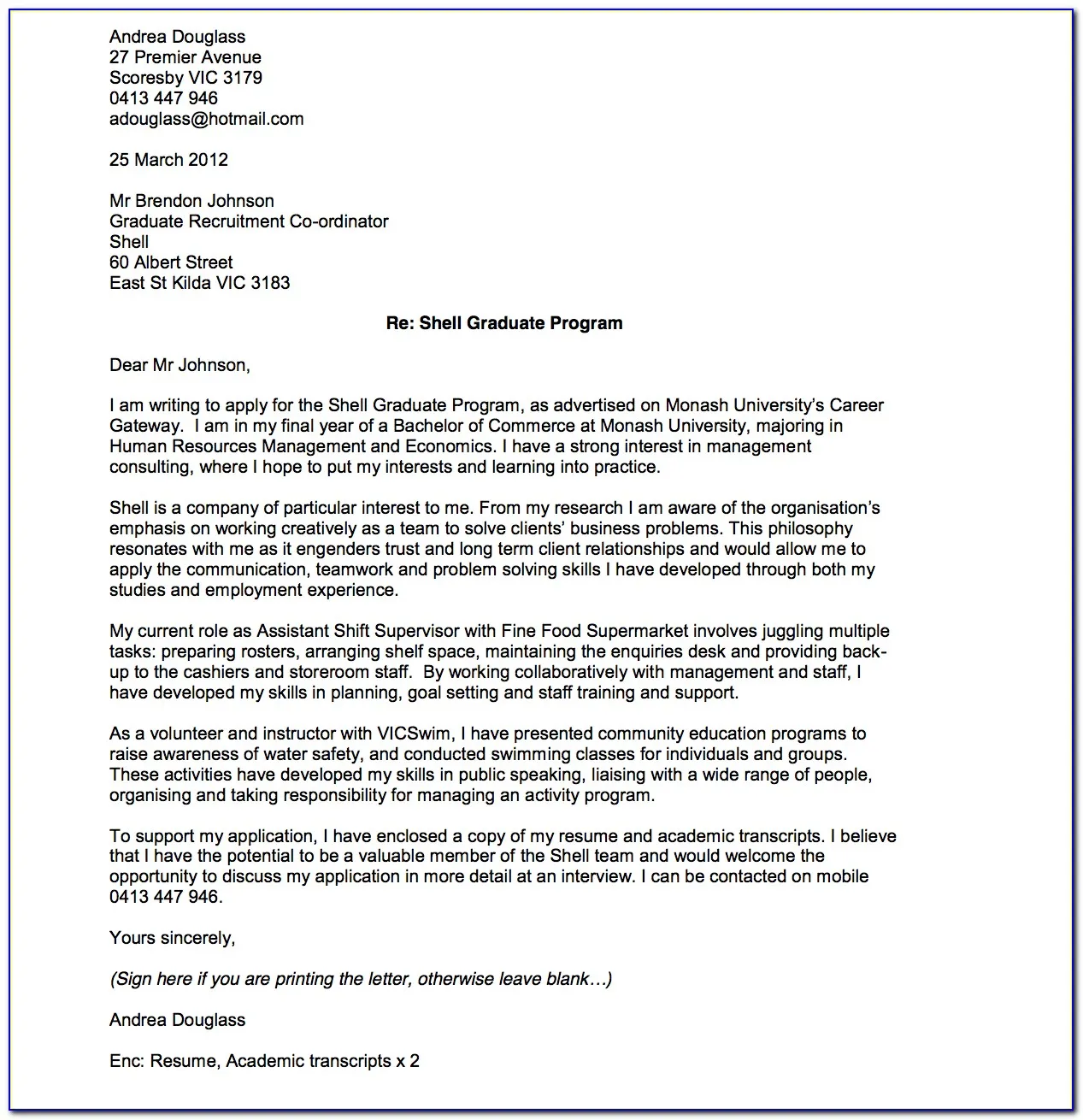
Start your cover letter with a formal salutation such as “Dear Mr./Ms./Mx. [Last Name]”. Always use the hiring manager’s name if available. Avoid generic greetings like “To Whom It May Concern.” If you are unsure about the name or gender, use a neutral salutation like “Dear Hiring Manager.” The salutation sets the tone for your letter and shows respect.
Opening Paragraph
The opening paragraph should immediately grab the reader’s attention. State the specific position you are applying for and where you saw the job posting. Briefly mention why you are interested in the role and the company. Show enthusiasm and a clear understanding of the job requirements. This opening paragraph is your first chance to make a strong impression, so make it count. Avoid generic phrases; instead, be direct, specific, and show your eagerness to contribute to the company’s goals. This paragraph’s purpose is to encourage the reader to continue reading your letter.
Body Paragraphs
The body paragraphs are where you showcase your relevant skills and experiences. Explain how your qualifications align with the job requirements. Tailor each paragraph to the specific needs of the position you are applying for, using the job description as your guide. Provide specific examples of your achievements, using the STAR method (Situation, Task, Action, Result) to demonstrate how you’ve solved problems or achieved goals in previous roles. This section should include enough details to support your claims and give the hiring manager a clear understanding of your ability to perform the job. Emphasize how your skills and experiences will benefit the company.
Highlight Relevant Skills and Experience
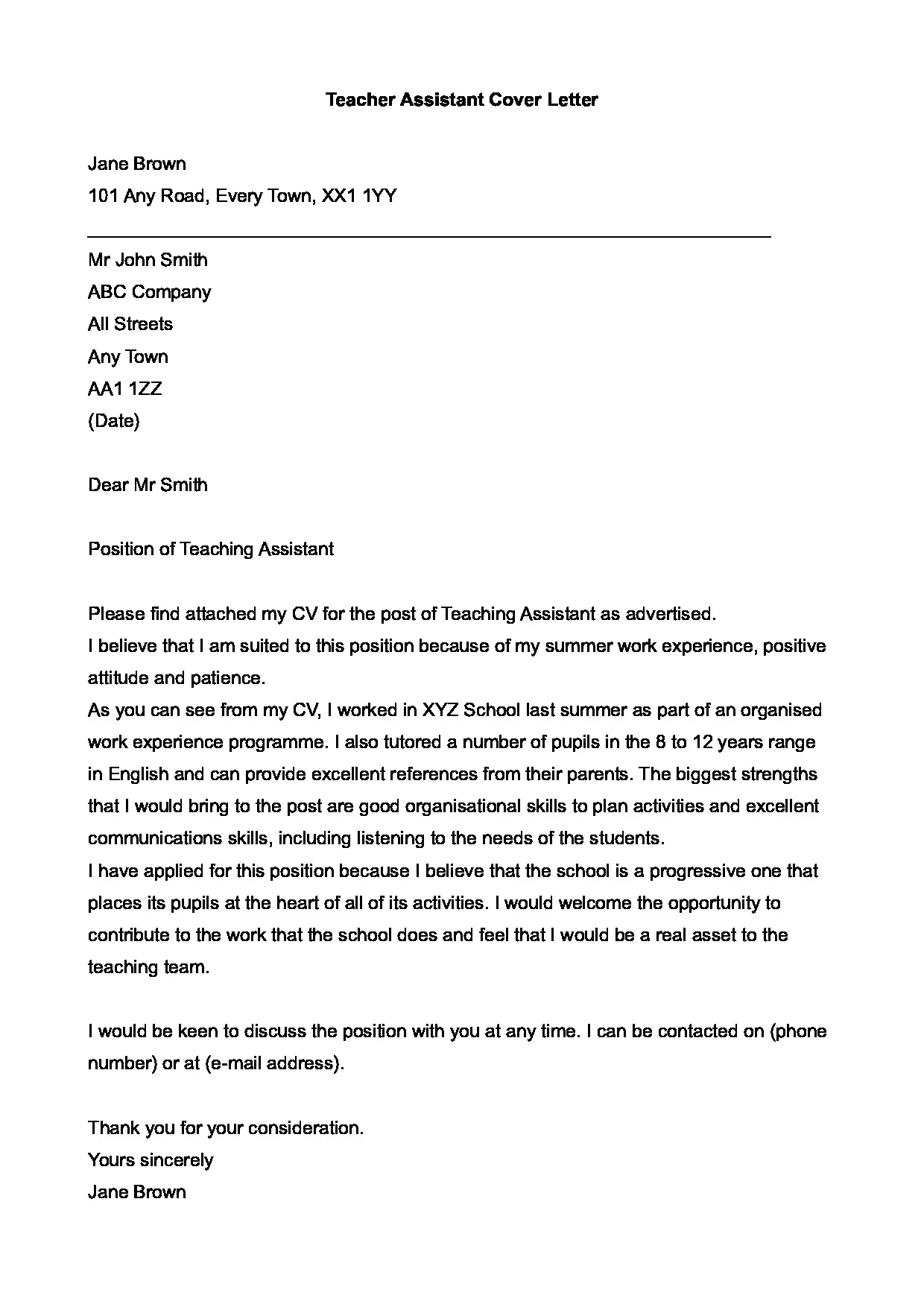
Focus on the skills and experiences that are most relevant to the job description. Carefully review the job posting and identify the key requirements and keywords. Then, choose the experiences that best demonstrate those skills. Provide clear examples of how you’ve used these skills in previous roles. These could include communication, problem-solving, leadership, and technical skills. Use the STAR method, which describes the situation, the task you faced, the action you took, and the result of your actions. This structure provides a clear and compelling narrative that illustrates your capabilities.
Quantify Achievements
Whenever possible, quantify your achievements. Use numbers and data to demonstrate the impact you’ve made in previous roles. For example, instead of saying “Improved customer service,” say “Improved customer satisfaction scores by 15%.” Quantifying your achievements makes your accomplishments more tangible and persuasive. Using measurable results can impress the hiring manager. This shows your ability to achieve results and contribute to the company’s bottom line. This also helps distinguish you from other candidates.
Showcase Personality and Enthusiasm
Let your personality shine through in your cover letter. While maintaining a professional tone, inject your enthusiasm for the role and the company. Show that you understand the company’s mission and values and are excited about the prospect of contributing to their success. This can be done by mentioning specific projects or initiatives you admire and how your skills align with those efforts. Expressing genuine interest will resonate with the hiring manager, setting you apart from other candidates. Demonstrate your personality through your word choice and tone to show you would be a great fit for the company culture.
Closing Paragraph
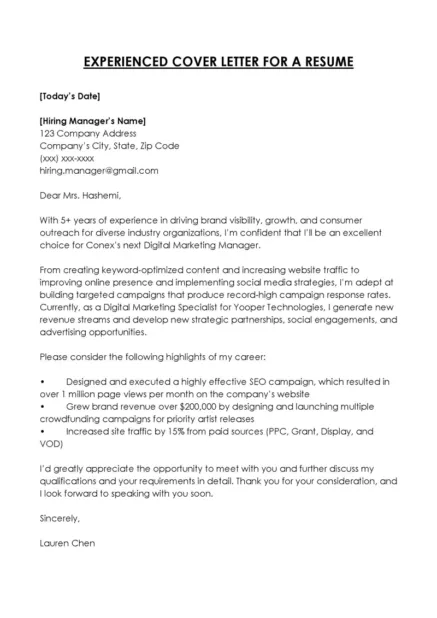
The closing paragraph should summarize your interest in the position, reiterate your qualifications, and express your enthusiasm for the opportunity. This section should also include a call to action. This allows you to state your willingness to discuss the application further. End the paragraph with a confident statement about how you can contribute to the company’s goals. It’s your final chance to leave a lasting impression on the hiring manager. Be sure to thank them for their time and consideration.
Express Gratitude
Expressing gratitude is a sign of professionalism. Thank the hiring manager for their time and consideration. This demonstrates respect and appreciation for their effort to read your application. Make sure this gratitude is genuine and reflects your enthusiasm for the opportunity. A simple thank you can make a positive impression and can encourage them to consider your application favorably.
Call to Action
Include a call to action in your closing paragraph. This could be an invitation to contact you for an interview or a request to discuss your application further. Make your call to action direct and clear. For example, you could say, “I am eager to discuss how my skills and experience can contribute to your team. I am available for an interview at your earliest convenience.” This shows your enthusiasm and initiative. It prompts the hiring manager to take the next step in the hiring process.
Complimentary Close
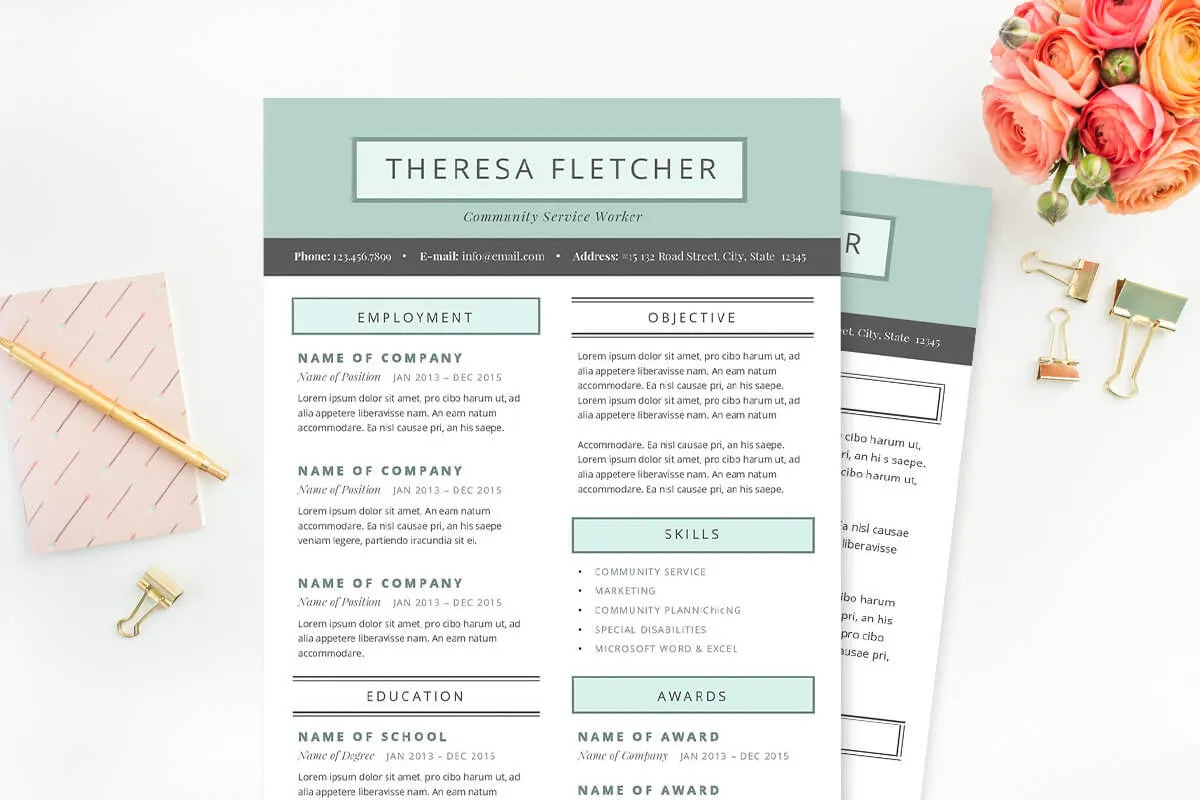
End your cover letter with a professional closing phrase such as “Sincerely”, “Best regards”, or “Respectfully.” Avoid casual closings like “Thanks” or “Cheers.” The closing should be formal and appropriate for a job application. It’s the final touch to the overall professionalism of your cover letter.
Signature
Leave space for your handwritten signature if printing and mailing the letter. If sending the cover letter electronically, you may use a typed signature followed by your full name. This completes the letter and adds a professional touch, making it ready for submission.
Cover Letter Formatting
Formatting is critical in cover letters as it improves readability and creates a professional appearance. Your cover letter should be easy to read and visually appealing. Proper formatting shows that you pay attention to detail and value your presentation. Consistent formatting across the document will help you make a good first impression. Choose a professional and easily readable format. The formatting choices you make will influence how the hiring manager perceives your application.
Font and Font Size
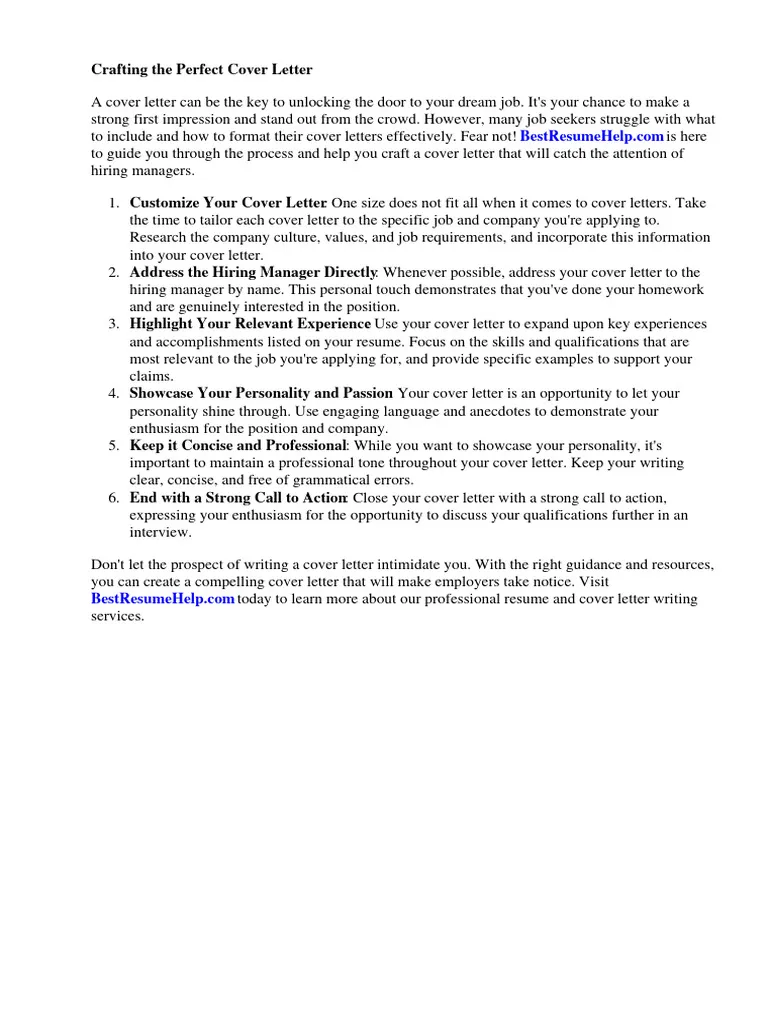
Choose a professional font such as Times New Roman, Arial, or Calibri. These fonts are widely recognized and easy to read. Maintain a font size between 10 and 12 points. This ensures the text is readable without being too large or too small. Consistency in your font choice is also essential to show professionalism. Use a clear and standard font to ensure your cover letter is easy to review and understand.
Margins and Spacing
Use 1-inch margins on all sides of your cover letter. This provides ample white space and makes the document more visually appealing. Use single spacing for the body of the letter and double spacing between paragraphs. These are standard formats that improve readability and the overall look of your cover letter. This helps in enhancing the overall clarity of your message. Correct margins and spacing prevent the cover letter from looking cluttered or hard to read.
Proofreading and Editing
Proofread your cover letter carefully for any spelling or grammatical errors. These errors can damage your credibility and create a negative impression on the hiring manager. Use spell-check and grammar-check tools. Consider having someone else proofread your letter as well. This helps catch errors you might have missed. Ensure your cover letter is polished and error-free before submitting it with your job application. Carefully review the text for inconsistencies and ensure that the writing flows smoothly.
Cover Letter Templates
Cover letter templates can be an excellent starting point for crafting your own. They provide a structure and format for your letter. Templates streamline the writing process. There are various templates available, from basic to more sophisticated designs. Choosing the right template can save you time and ensure a professional look. While templates can be very useful, customization is vital to ensure your letter is tailored to the specific job and company.
Using a Cover Letter Template
When using a cover letter template, select one that fits your needs and the job you are applying for. There are many templates available online. Select a design that suits the industry and position. Choose a template that is easy to customize and allows you to add your personal information. Many word-processing programs offer templates you can use directly. Select a template that is simple and easy to read. Using a cover letter template will save time and ensure that the document is professionally formatted.
Customize the Template
Never submit a generic cover letter. Always customize the template to fit the job description. Adapt the language and content to the specific requirements of the position. Personalize the template by including details about your skills, experiences, and the company. Research the company and tailor your letter to demonstrate your interest in the company’s mission, values, and goals. Making sure to include information that shows you are a great fit and making sure to customize your letter will help you to get noticed by the hiring manager. Customizing a template makes sure your letter is unique.
Resume Integration
A well-written cover letter is crucial to support your resume and create a cohesive application package. Your resume provides a comprehensive overview of your qualifications, while your cover letter gives you the chance to interpret and highlight aspects of your career. They provide complementary views of your capabilities and background. The two documents should work in concert to paint a complete picture of your professional profile. Ensure that your cover letter and resume align, and reference similar information. They need to be well-integrated to increase your chances of getting an interview.
Linking Cover Letter and Resume
Make sure that your cover letter references your resume and vice versa. Use similar language and keywords to illustrate how your skills and experience align with the job requirements. Highlight specific accomplishments or experiences. Use this connection to draw the reader’s attention to key details in your resume that directly match the job’s needs. Your cover letter should give context and enthusiasm to your resume.
Resume and Cover Letter Tips
To maximize your chances of success, be sure to follow some key resume and cover letter tips. Create and keep in mind the purpose of each document. Know what to include and what to avoid to make a good impression. Avoid some common mistakes when writing your documents to ensure your application is noticed. Use action verbs to show your skills and accomplishments. Follow these tips to create winning cover letters and resumes that will make you stand out.
Common Mistakes to Avoid
Avoiding common mistakes can greatly improve the effectiveness of your cover letter and resume. Watch out for the mistakes below. Avoid submitting documents with typos and spelling errors, as they can undermine your credibility. Don’t include generic, uninspired content. Ensure each application is tailored to the specific job. Make sure that your documents aren’t just copies of each other. Watch for the length of your cover letters, as hiring managers may not have time to read long letters. Pay careful attention to all these details.
Spelling and Grammar Errors
Carelessly written documents can undermine your application. Proofreading your documents carefully is essential to avoid any mistakes. Errors can make you appear careless and unprofessional. Always use spell-check and grammar-check tools. Have someone else review your documents to ensure accuracy. A mistake-free cover letter and resume signal your attention to detail.
Generic Content
Avoid using generic and repetitive content in your application. Create a personalized application, using details about the job and company to show genuine interest. Your goal is to make sure your skills and experiences align with the job requirements. If your letter is copied and pasted from an old application, it will make the hiring manager think that you are not interested in this particular job and company. To stand out from other candidates, tailor your letter to the specific requirements of the job.
Lack of Customization
Ensure each cover letter is unique and tailored to the specific job and company. Sending out generic letters will not make you stand out. Research the company, and highlight how your skills align with their needs and the job requirements. The best way to be sure that you get the job is to customize your cover letters. Address the hiring manager by name when possible. This shows a genuine interest in the position and the company.
Lengthy Cover Letters
Keep your cover letters concise and to the point. Hiring managers have limited time. Try to focus on your key qualifications and the job’s most relevant skills. The ideal cover letter length should be no more than one page. Getting the most important information across quickly is key. You can also create a sense of appreciation for the hiring manager’s time by keeping your letter brief and focused.
Action Verbs to Include
Use action verbs to create a strong impression. When describing your accomplishments and skills, use action verbs such as “managed”, “led”, “developed”, or “implemented.” These verbs showcase your abilities and create more engaging statements. Action verbs make your statements sound more active and impactful. These verbs will help you describe your achievements. A strong action verb will increase the impact of your statements.
Writing Cover Letter for Freshers
For freshers, the cover letter is a chance to showcase their skills and enthusiasm despite a lack of professional experience. Highlight any internships, projects, and academic achievements that demonstrate your abilities. Emphasize soft skills such as communication, teamwork, and problem-solving. Express your eagerness to learn and contribute. Tailor your cover letter to the specific job requirements, and be sure to demonstrate your willingness to learn and grow with the company. Make a strong case for your potential and passion for the role.
Writing Cover Letter for Experienced Professionals
Experienced professionals should leverage their cover letters to highlight their key achievements and how they align with the job. Provide specific examples of your accomplishments, quantifying your results whenever possible. Focus on how your past experience can benefit the company. Highlight the skills and experience that are most relevant to the new position. This also allows you to demonstrate your leadership abilities. Tailor your letter to the specific requirements of the role. Show your ability to make a real impact and how your skills will add value to the new company.
